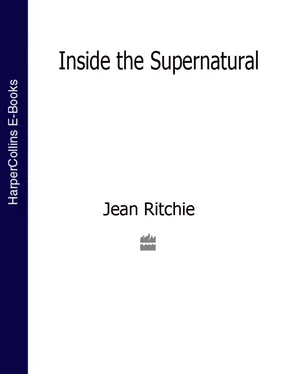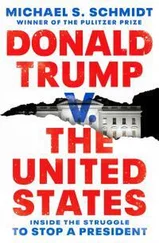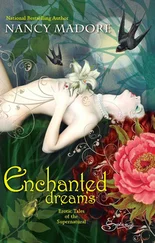Cornell’s experience came after a childhood with a mother who was ‘sensitive’ and who made various telepathic links with him and other members of the family. Although as a teenager he reacted against it, his experience in India made him interested enough to embark upon a lifetime’s study of the paranormal.
Dr Alan Gauld’s interest stretches back into his childhood and he too says he has inherited it from his mother. At Cambridge in the 1950s, he spent a night with other students involved in the University’s Society for Psychical Research in a reputedly haunted house, with such marked results that he has been hooked ever since. He is critical of laboratory parapsychology, comparing it to a seismologist replicating tiny earthquakes in a lab while the buildings around shake as the result of real earthquakes. Not that he thinks evidence for the paranormal is often as dramatic or as quantifiable as an earthquake, but he believes that it must be studied out in the field where it happens spontaneously. He has encountered many puzzling and unexplained phenomena, but he is very slow to draw paranormal conclusions. In his own private life, too, he has been faced with the inexplicable. Twenty years ago, when his second son was newly born and his older son was three years old, he and his wife Sheila were watching a television programme about the birth of a baby.
‘Sheila was fascinated, I was trying not to look. Just after the baby was born on screen we heard our older son crying upstairs. When Sheila went to him he said “Mummy, lady went into hospital, took off her clothes and had a baby.” There was no possible way that he could have seen or heard anything from the television set, and the only explanation seems to be some telepathic link between him and his mother. We had another instance of it a few weeks later when Sheila, who is vegetarian, was upset witnessing rabbits being shot as they ran across a field in a television programme. Our son again seemed to have picked up the scene, because he said “Rabbits were running, running”. Those were the only two occasions it happened and it seemed to have some connection with Sheila’s heightened emotional state at each time. How can that be reproduced in a laboratory?’
Like Tony Cornell, Alan Gauld’s experience in trying to isolate and define the paranormal outside the laboratory has not made him optimistic about easy solutions:
‘I am less optimistic than I was about the prospect of readily coming to any answers. I have encountered a lot of fraud and natural causes and I’ve become a lot more cautious. I, and other psychic researchers, have incidentally become experts on all sorts of things like plumbing, building research, underground water but, ultimately, it is impossible to say that we have excluded everything.’
In their book, Gauld and Cornell offer powerful evidence for the existence of poltergeists and ghosts, even if they remain equivocal about their origins and causes. Dr Gauld has computer analysed five hundred cases, all of them well documented, although not necessarily contemporary (the oldest dates back to AD 530, seventy per cent occurred after 1800 and forty per cent during this century). Through complicated statistical analysis of sixty-three different possible characteristics for each case, he has effectively proved that there is a definable difference between hauntings and poltergeists, despite the overlap of characteristics between the groups, and that the basis of categorization is whether the phenomena are based on a person or a place.
Traditionally, poltergeists were centred on young adolescent girls but, in the later cases studied by Gauld, there has been a distinct upswing in the number of men acting as the central poltergeist ‘agent’. Other research shows that the age profile of the agent has changed too, with more elderly people involved. (It has been suggested that the isolation of older people, and the consequent unhappiness it brings, may be making them more ready hosts for poltergeist phenomena.) Some sort of disturbance in the agent does seem to be a common factor and adolescence is often a time of acute emotional upheaval.
Why should poltergeist activity be triggered by some people and not others who are under equal stress? Can the agents in any conscious way control what happens around them? The answer to the second question would appear to be, only when there is a fraudulent element (and some young people, carried away with the attention they get when phenomena first start, cheat to keep their ‘poltergeist’ going). The answer to the first question must be that nobody knows: there has been no thorough comparison of the personality profiles of poltergeist agents.
Two of the most celebrated person-based poltergeist cases are the Rosenheim case (in Germany in 1967 and 1968) and the Miami case (in Florida, also in 1967). These two cases are now standard in poltergeist literature because they were investigated so well, the phenomena persisted long enough for good records to be made and kept and because the evidence appears to be irrefutable.
John Stiles, the investigations officer of the Society for Psychical Research and a noted sceptic who has never experienced anything paranormal in his life, says that the Rosenheim case is the only piece of evidence he has looked into that makes him believe that poltergeists exist.
The poltergeist activity occurred in the offices of a well-established lawyer’s practice in the small German town of Rosenheim. Anne-Marie Schneider, aged eighteen, was a secretary in the Rosenheim office and fairly new to the job. Shortly after she joined, the entire office was reduced to chaos. Light bulbs would swing wildly and explode, showering glass everywhere; fluorescent ceiling lights would go out, sometimes with a bang. (On one occasion, electricians found that the fluorescent tubes throughout the building had been twisted ninety degrees in their sockets. After replacing them all, there was another bang and the same distortions were found in the new tubes.) Fuses blew with monotonous regularity; sometimes cartridge fuses seemed to have been pulled out of their sockets.
Problems with the telephones were the most severe inconvenience for the lawyer’s business. Frequently, all four telephones would ring at once when no one was on the line. Calls were interrupted or cut off. Telephone bills rose astronomically and the office was charged for numerous calls that the staff denied making. Developing fluid from photocopying machines would spill while nobody was near the machine.
Because the disturbances appeared to be confined to electrical and telecommunications equipment, the lawyer called in the appropriate authorities. Experts from both the electricity supply company and the telephone company were able to install monitoring equipment which gives some factual non-human record of what went on. The local power station’s monitoring showed up large irregular surges in the power supply and these continued even after, bewildered, they installed a generator to guarantee a continuous regulated supply of electricity to the offices.
The telephone company’s findings were even more surprising. By recording every outward call, what time it was made and how long it lasted, they found that over a few weeks many calls were made to the speaking clock, often at the rate of six times in a minute, and at times when it is certain that nobody in the office could have been responsible. On one day, forty-six calls were made to the clock in a fifteen-minute period.
With so many staff and technicians in on what was happening, it is hardly surprising that news got out to the local press and, as a result, two television companies made short documentaries about the phenomena. The lawyer, at his wit’s end because his office was being destroyed daily, and business and staff morale were suffering, filed a formal charge with the police against the (unknown) mischief maker. He hoped that, if he were the victim of an elaborate practical joke, this would persuade whoever was doing it to stop. The local CID launched an investigation.
Читать дальше












